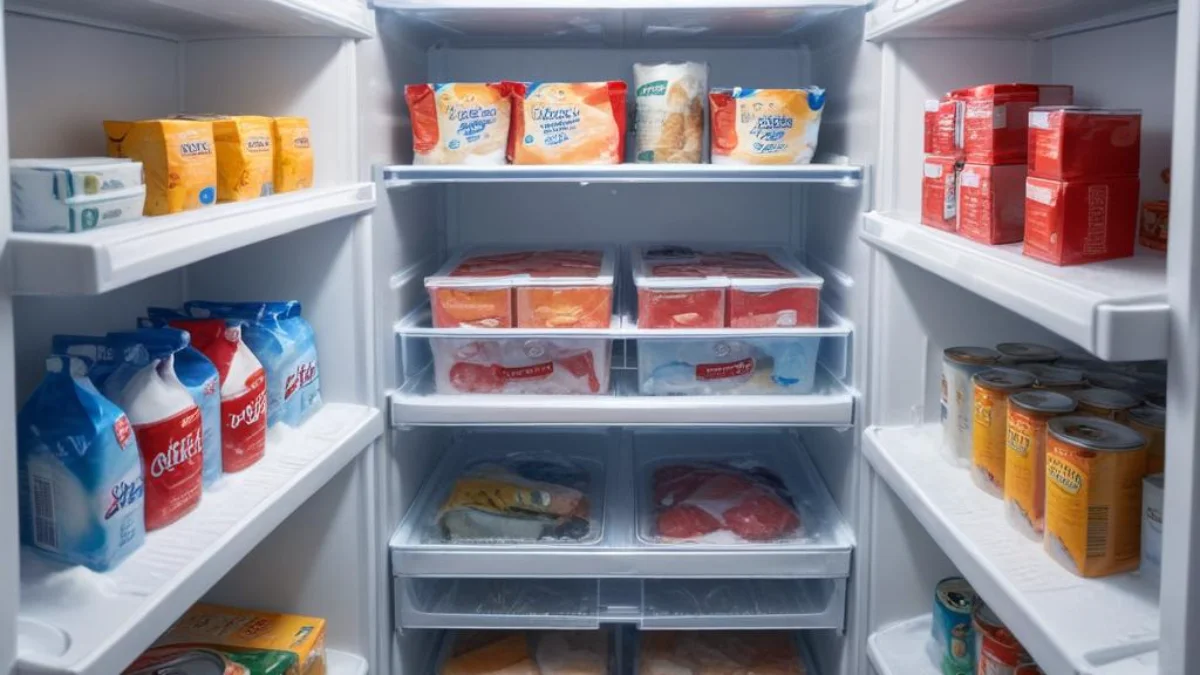What Is Normal Freezer Temperature Fluctuation?
You open your freezer, grab a carton of ice cream, and notice it’s a little softer than you’d like. A wave of panic sets in. Is your freezer failing? Is all your food on the brink of spoiling? This is a common worry for many homeowners.
The constant hum of the freezer is a sound of reassurance, a sign that your food is being safely preserved. But when you suspect the temperature is fluctuating, that reassurance can quickly turn to anxiety. You’re not alone in this concern; many people wonder what constitutes a normal temperature swing for their freezer.
You'll Learn About
Understanding the Basics of Freezer Operation
Before we dive into the fluctuations, it’s crucial to know the ideal temperature for your freezer. For optimal food preservation and safety, your freezer should be set to 0°F (-18°C). This temperature is low enough to stop the growth of bacteria and preserve the nutritional value and flavor of your food for extended periods.
However, your freezer’s internal temperature doesn’t just sit statically at 0°F. It’s a dynamic environment where the temperature naturally rises and falls as part of its normal operation. Understanding these cycles is the key to differentiating between a healthy appliance and one that needs attention.
The Inevitable Temperature Swings: What’s Normal?
So, what is a normal freezer temperature fluctuation? A healthy, modern freezer will typically experience temperature swings of +/- 5°F to 10°F around its set point during its regular cycles. This means the temperature might briefly rise to 10°F or dip down to -5°F.
These fluctuations are not only normal but are also a necessary part of how your freezer works. The appliance’s compressor and cooling system cycle on and off to maintain the average target temperature. It’s the extremes and the duration of these swings that you need to pay attention to.
Common Causes of Freezer Temperature Fluctuation
Several factors contribute to the regular temperature changes inside your freezer. Recognizing these can help you manage your freezer’s efficiency and give you peace of mind. From automatic defrost cycles to how you use the appliance, each plays a role.
The Automatic Defrost Cycle
The most significant and common cause of a temporary temperature increase is the automatic defrost cycle. Modern frost-free freezers run this cycle periodically (usually once or twice a day) to melt any frost buildup on the evaporator coils. This is essential for maintaining airflow and efficiency.
During this cycle, a small heater turns on to melt the ice, which can cause the internal air temperature to rise, sometimes up to 15-20°F for a short period of 20 to 40 minutes. While the air warms up, the core temperature of your frozen food should remain safely frozen due to its thermal mass.
Door Openings and Usage Habits
Every time you open the freezer door, you let warm, moist air rush in. This instantly raises the internal temperature and forces the compressor to work harder to bring it back down. The longer the door is open, and the more frequently it’s opened, the more significant the temperature swings will be.
Try to be efficient when retrieving items. Know what you want before you open the door to minimize the time it stays open. This simple habit can have a big impact on temperature stability.
Adding New, Unfrozen Food
Placing a large amount of warm or room-temperature food into the freezer will naturally cause the internal temperature to rise. Your freezer’s compressor will then kick into overdrive to cool down the new items and the surrounding air. This is a normal and expected fluctuation.
To mitigate this, try to cool hot foods in the refrigerator first before transferring them to the freezer. If you’re adding a large grocery haul, spread the items out to allow for better air circulation and faster freezing.

Blocked Air Vents and Poor Circulation
Your freezer relies on the circulation of cold air to maintain a consistent temperature throughout the compartment. If air vents are blocked by food packages, it can create warm spots and cause the freezer to work inefficiently, leading to wider temperature swings.
Ensure that you don’t over-pack your freezer. Leave some space between items and along the walls to allow cold air to move freely. A well-organized freezer is an efficient freezer.
When to Worry: Signs of an Abnormal Fluctuation
While minor fluctuations are normal, some signs indicate a more serious problem. If you notice any of the following, it might be time to investigate further or call a professional for help. Ignoring these warning signs could lead to spoiled food and costly repairs.
Consistently High Temperatures
If your freezer’s temperature consistently stays above 10°F, even when you haven’t recently added food or opened the door, it’s a red flag. This could indicate a problem with the compressor, sealed system, or thermostat. Food safety becomes a major concern at these temperatures.
Frequent or Extreme Temperature Spikes
Normal fluctuations are gradual and cyclical. If you’re observing rapid and extreme temperature spikes outside of the defrost cycle, there might be an issue. These erratic changes can compromise the quality and safety of your food, causing issues like freezer burn.
Understanding the difference between various heating systems, like the concepts discussed in this comparison of Nuheat vs Ditra-Heat, can highlight how temperature regulation technology works in different applications.
Visible Signs of Thawing and Refreezing
One of the most telling signs of a problem is evidence of your food thawing and then refreezing. Look for excessive ice crystal formation on food packages, frozen liquids pooling at the bottom of the freezer, or food items sticking together in a solid block. This is a clear indicator that the temperature is rising too high for too long.
How to Monitor and Manage Your Freezer’s Temperature
Being proactive is the best approach to ensure your freezer is functioning correctly. A few simple steps can help you monitor its performance and maintain an optimal environment for your frozen goods. This doesn’t require expensive tools, just a little attention.
Use a Freezer Thermometer
The most reliable way to know what’s happening inside your freezer is to use a dedicated freezer thermometer. Place it in a central location, away from the door, and check it periodically. This will give you an accurate reading of the ambient temperature and help you track fluctuations over time.
Keep Your Freezer Full (But Not Overstuffed)
A full freezer is more efficient than an empty one. The frozen items act as thermal masses, helping to maintain the cold temperature and reducing the impact of warm air when the door is opened. If your freezer is looking a bit sparse, you can fill empty space with jugs of water.
Just remember not to overstuff it, as this can block air vents and impede circulation. Proper organization is key for both accessibility and performance. Sometimes, simple structural solutions, like considering if you should fill PVC pipe with concrete for support, can inspire you to think about how structure and density play a role in different home systems.
Check and Clean the Condenser Coils
The condenser coils are responsible for releasing heat from the refrigerant. Over time, they can become covered in dust, pet hair, and debris, which insulates them and reduces their efficiency. This forces the compressor to work harder and can lead to temperature regulation problems.
You should clean the coils at least once or twice a year. They are typically located on the back or bottom of the freezer. Unplug the unit and use a vacuum with a brush attachment to gently clean them.
Inspect the Door Gasket (Seal)
A faulty door seal is a common culprit for temperature issues. If the gasket is dirty, cracked, or torn, it can’t create an airtight seal, allowing cold air to escape and warm air to enter. This leads to constant compressor operation and temperature instability.
Clean the gasket regularly with warm, soapy water. To test the seal, close the door on a dollar bill. If you can pull the bill out easily, the seal is likely weak and may need to be replaced.
| Factor | Normal Temperature Fluctuation Range (°F) | Potential Impact on Food Quality |
|---|---|---|
| Automatic Defrost Cycle | +15°F to +20°F (temporary) | Minimal, as food core temperature remains stable. |
| Frequent Door Opening | +5°F to +10°F | Can lead to surface ice crystals and minor freezer burn over time. |
| Adding Warm Food | +10°F to +15°F (depends on quantity) | Temporary; can affect adjacent items if not spaced properly. |
| Full vs. Empty Freezer | +/- 3°F (Full) vs. +/- 8°F (Empty) | A full freezer is more stable and energy-efficient. |
| Dirty Condenser Coils | Consistently higher average temp (+5°F or more) | Leads to poor cooling, freezer burn, and component strain. |
| Faulty Door Seal | Erratic fluctuations, constant running | Causes frost buildup, thawing/refreezing, and high energy use. |
Your Freezer’s Health: The Final Verdict
In conclusion, a certain degree of temperature fluctuation is not only normal for a freezer but is a sign that it’s operating as designed. The key is understanding the difference between these routine cycles and the warning signs of a potential malfunction. By monitoring your freezer’s temperature and performing regular maintenance, you can ensure its longevity and the safety of your food.
Just like you might research the price of a Maytag water treatment system to ensure water quality, investing a little time in understanding your freezer saves you money and stress in the long run. Don’t let unnecessary panic spoil your peace of mind. A well-maintained freezer is a reliable cornerstone of a modern kitchen.

